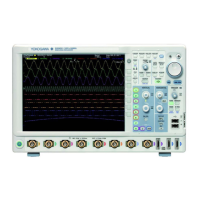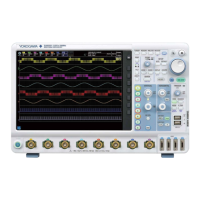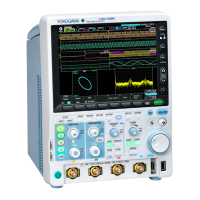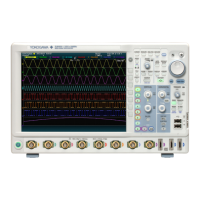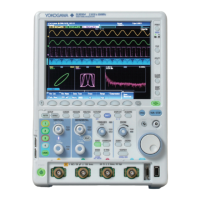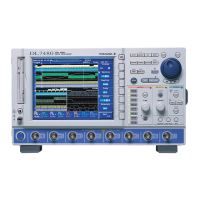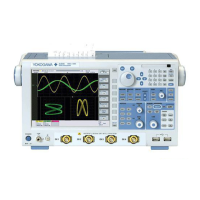5-226
IM 710105-17E
5.28 STATus Group
The commands in the STATus group are used to make settings and inquiries related to the communication status
feature. There are no front panel keys that correspond to the commands in this group. For information about status
reports, see chapter 6.
:STATus?
Function Queries all of the settings for the communication
status feature.
Syntax
:STATus?
:STATus:CONDition?
Function Queries the contents of the condition register.
Syntax
:STATus:CONDition?
Example
:STATUS:CONDITION?
-> :STATUS:CONDITION 16
Description For information about the condition register, see
chapter 6, “Status Reports.”
:STATus:EESE
Function Sets or queries the extended event enable
register.
Syntax
:STATus:EESE {<Register>}
:STATus:EESE?
<Register> = 0 to 65535
Example
:STATUS:EESE 257
:STATUS:EESE?
-> :STATUS:EESE 257
Description For information about the extended event enable
register, see chapter 6, “Status Reports.”
:STATus:EESR?
Function Queries the contents of the extended event
register and clear the register.
Syntax
:STATus:EESR?
Example
:STATUS:EESR?
-> :STATUS:EESR 1
Description For information about the extended event register,
see chapter 6, “Status Reports.”
:STATus:ERRor?
Function Queries the error code and message information
(top of the error queue).
Syntax
:STATus:ERRor?
Example
:STATUS:ERROR?
-> 113,"Undefined header"
:STATus:FILTer<x>
Function Sets or queries the transition filter.
Syntax
:STATus:FILTer<x> {BOTH|FALL|NEVer|RI
SE}
:STATus:FILTer<x>?
<x> = 1 to 16
Example
:STATUS:FILTER2 RISE
:STATUS:FILTER2?
-> :STATUS:FILTER1 RISE
Description For information about the transition filter, see
chapter 6, “Status Reports.”
:STATus:QENable
Function Sets or queries whether or not messages other
than errors will be stored to the error queue (on/
off).
Syntax
:STATus:QENable {<Boolean>}
:STATus:QENable?
Example
:STATUS:QENABLE ON
:STATUS:QENABLE?
-> :STATUS:QENABLE 1
:STATus:QMESsage
Function Sets or queries whether or not message
information will be attached to the response to the
STATus:ERRor? query (on/off).
Syntax
:STATus:QMESsage {<Boolean>}
:STATus:QMESsage?
Example
:STATUS:QMESSAGE OFF
:STATUS:QMESSAGE?
-> :STATUS:QMESSAGE 0
:STATus:SPOLl? (Serial Poll)
Function Executes serial polling.
Syntax
:STATus:SPOLl?
Example
:STATUS:SPOLL?
-> :STATUS:SPOLL 0
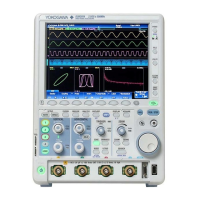
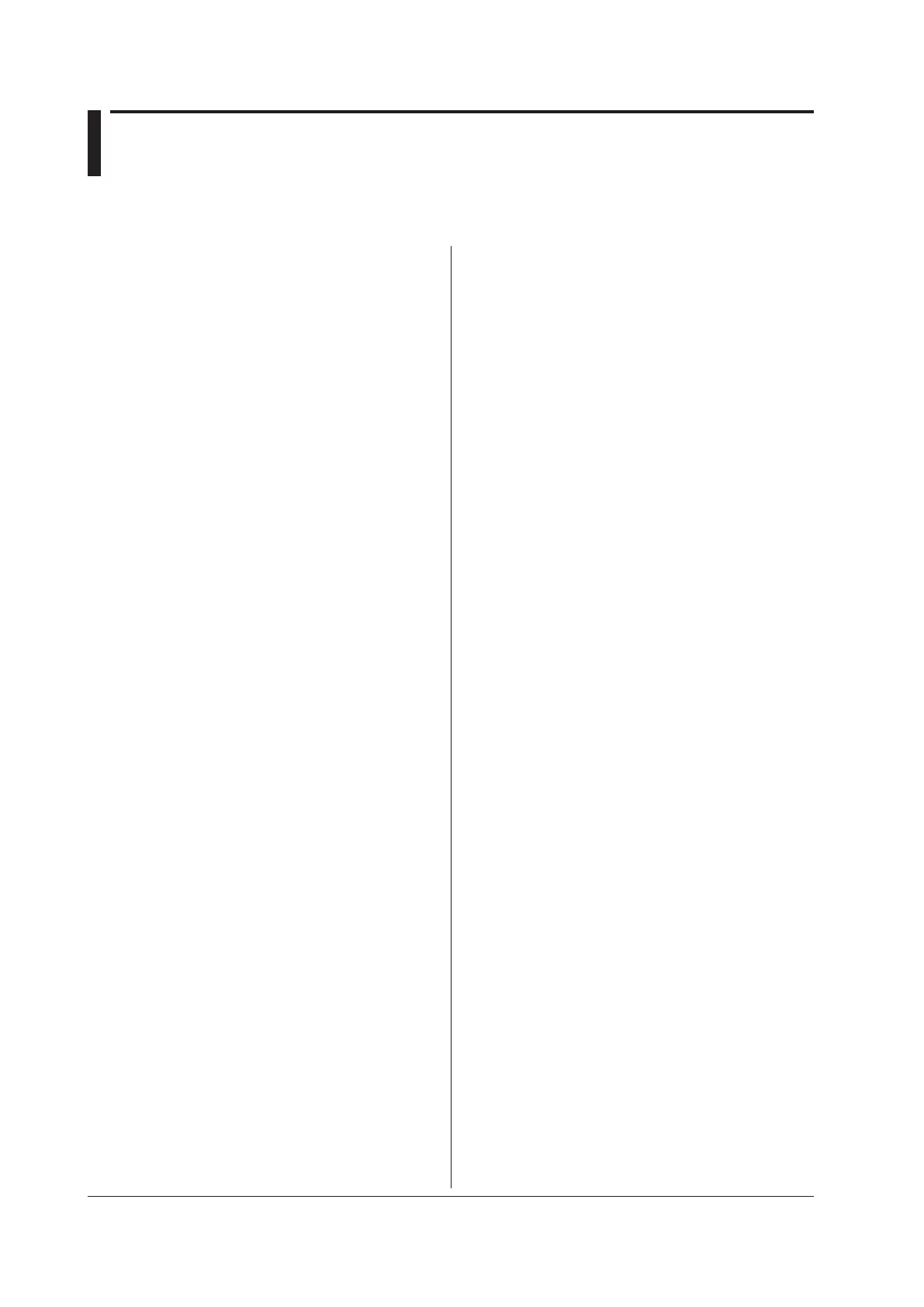